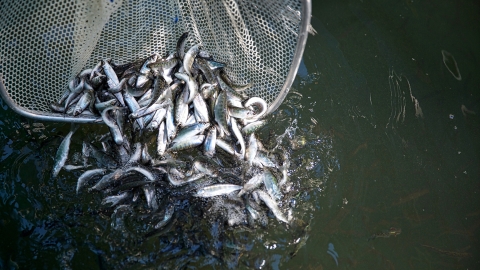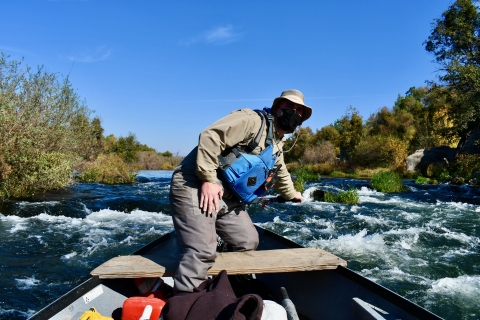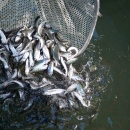San Joaquin River Restoration Program
Historically, the San Joaquin River sustained the southernmost populations of spring-run, fall-run and late-fall run Chinook salmon in North America. However, the construction of Friant Dam and increased groundwater pumping and water diversions in the San Joaquin Valley led to the loss of volitional fish passage fish passage
Fish passage is the ability of fish or other aquatic species to move freely throughout their life to find food, reproduce, and complete their natural migration cycles. Millions of barriers to fish passage across the country are fragmenting habitat and leading to species declines. The U.S. Fish and Wildlife Service's National Fish Passage Program is working to reconnect watersheds to benefit both wildlife and people.
Learn more about fish passage , degradation of salmon spawning habitats, and the extirpation of all salmon runs in the upper San Joaquin River by the 1950s.
In 2006, a settlement was reached between the Natural Resources Defense Council, Friant Water Users Authority and the U.S. departments of the Interior and Commerce to establish a restoration plan for the upper San Joaquin River below Friant Dam.
The settlement of this case led to the establishment of the San Joaquin River Restoration Program, a multi-agency collaboration whose two main goals are to:
Restore and maintain naturally reproducing and self-sustaining populations of salmon and other fishes in "good condition" to the San Joaquin River restoration area, the mainstem of the San Joaquin River from Friant Dam to the Merced confluence; and
Avoid/reduce any adverse water supply impacts on the Friant Division long-term water contractors resulting from restoration flows in the restoration area.
The program spans multiple offices and agencies, including the U.S. Fish and Wildlife Service, U.S. Bureau of Reclamation, U.S. National Marine Fisheries Service, California Department of Water Resources, California Department of Fish and Wildlife and other partners.
The Lodi Fish and Wildlife Office conducts a number of monitoring projects to inform the SJRRP’s ongoing restoration projects, including redd surveys, carcass surveys, mobile acoustic telemetry monitoring and fry-emergence success measurement. Currently, we are focused on evaluating and guiding the restoration of spring-run Chinook salmon to the San Joaquin River restoration area.




